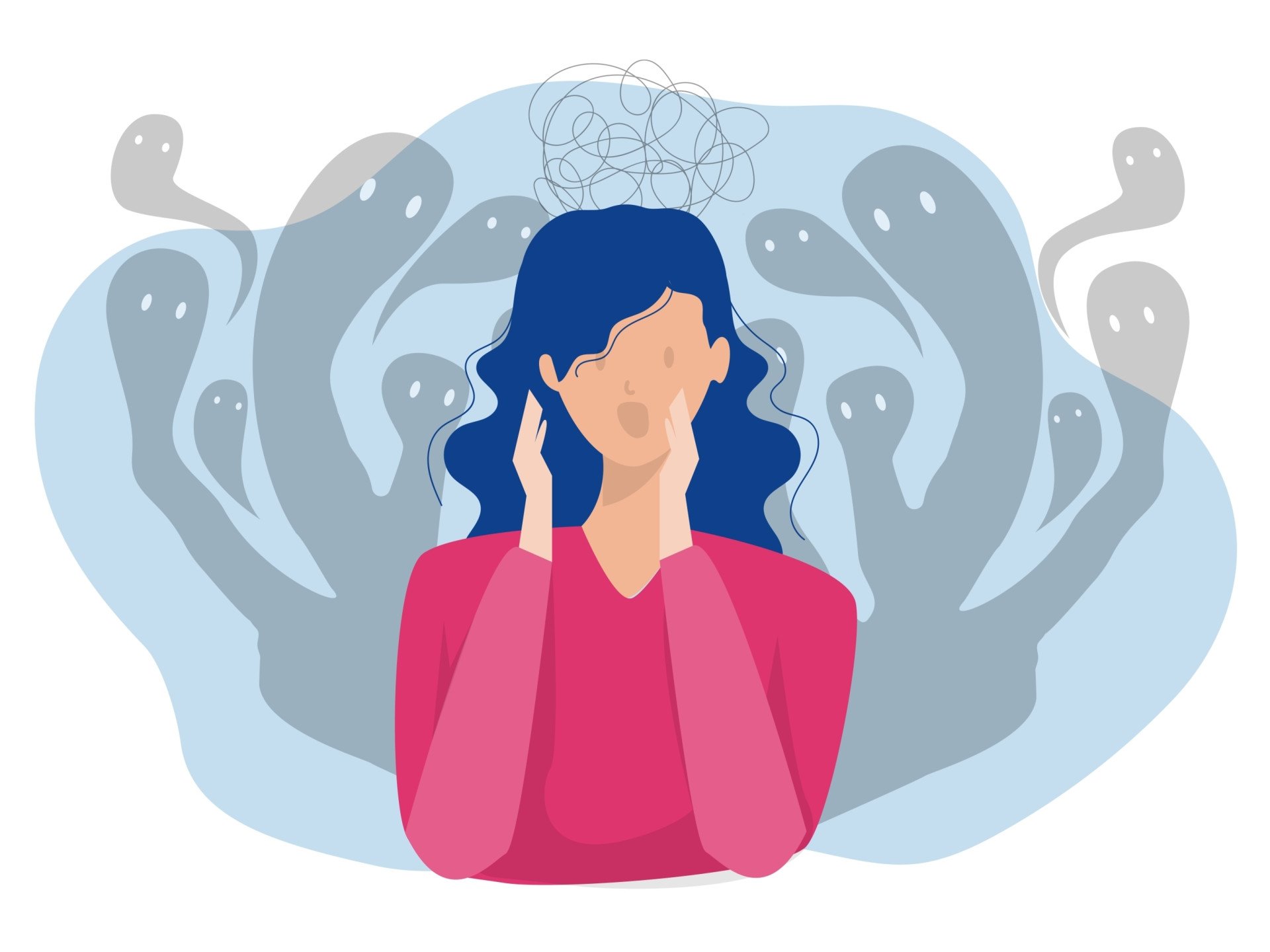
Key Points
- People with anxiety disorders judged groups of faces as more fearful than non-anxious people, even when the mix of emotions was the same.
- Eye-tracking showed anxious participants looked less at fearful faces and more at happy ones—yet still decided the crowd was threatening.
- Worry (anxious apprehension) was linked to this “threat judgment bias” but not to where people looked.
- Avoiding fearful images was paradoxically tied to stronger fearful conclusions.
A crowd that feels scarier than it looks
Imagine standing in a busy café. Some people are laughing, others look neutral, and one or two wear tight, worried expressions.
If you live with anxiety, your brain may quietly tilt the balance: the room feels tense, even if most faces are friendly.
This isn’t just imagination. A new experiment using eye-tracking reveals that anxious people judge groups of emotional faces as more fearful—even while their eyes avoid the very expressions they fear.
Moving beyond single snapshots of emotion
Much past research studied anxiety using single emotional images: a spider, an angry face, a threatening word. But daily life is noisier.
We take in many cues at once—micro-expressions, body posture, voice tone—and form a “summary judgment.”
To capture this complexity, researchers used an emotion ensemble judgment task.
Participants viewed sets of faces ranging from very fearful to very happy.
Their job: decide whether the group, on average, felt more fearful or more happy. Meanwhile, an eye-tracker recorded exactly where and how long they looked.
The anxious tilt toward threat
The study compared 51 adults with diagnosed anxiety disorders to 61 control participants.
The anxious group judged the crowds as fearful more often than controls, even when the mix of expressions was identical.
This bias toward perceiving threat wasn’t about mis-seeing individual faces—both groups rated single expressions similarly. Instead, the difference appeared when integrating multiple signals into a bigger picture.
Worry levels, measured through the Penn State Worry Questionnaire, predicted this fearful tilt. The more someone was caught in chronic anxious apprehension, the more likely they were to see the crowd as threatening.
Looking away, deciding fearful anyway
Eye-tracking revealed a twist. Instead of staring at fearful faces, anxious participants actually looked away from them. Their gaze landed more often—and lingered longer—on happy faces.
This pattern, called threat avoidance, might sound protective. But the data showed the opposite: the more someone avoided looking at fear, the more likely they were to judge the crowd as frightening.
It’s as if anxious minds both dodge the fearful evidence and let it dominate their conclusion—like turning down the volume on a scary song, but still feeling the beat in your chest.
Why avoidance strengthens threat
One explanation is that even when eyes look away, the brain may still process threatening cues covertly—like noticing a snake in the grass without staring at it.
Another possibility is memory: once fear registers, it weighs heavily in the final decision, even if attention shifts elsewhere.
This paradox—less looking, more fear—helps explain why anxious people often describe the world as threatening even when nothing obvious seems wrong.
Why it matters
These findings illuminate a core feature of anxiety: it’s not just about what we see, but how we combine pieces of evidence.
For everyday life, this helps explain why anxious people might walk away from social events feeling judged, even if most cues were neutral or positive.
Their brains lean toward fearful conclusions, despite consciously focusing on the positives.
For clinicians, the results underscore the limits of therapies that only train people to disengage from threat (like some attention-bias modification programs).
The deeper issue may lie in how the brain integrates multiple emotional signals.
Interventions that help anxious individuals recalibrate how they weigh threat versus safety cues—perhaps through cognitive restructuring or mindfulness—may prove more effective.
A new lens on worry
The role of anxious apprehension is especially important.
Worry predicted how fearful participants judged the ensembles, but not where they directed their eyes.
This suggests that worry shapes the final “big picture” judgment more than the moment-to-moment direction of attention.
In practice, this means that tackling worry itself—through techniques like acceptance-based therapy, mindfulness, or metacognitive strategies—may help reduce biased fearful interpretations, even if visual attention habits remain unchanged.
Takeaway for readers
If you live with anxiety and often feel the world is hostile, this study suggests two truths:
- Your eyes may be skimming past the very things you fear.
- Yet your mind still gives those cues extra weight in shaping how safe (or unsafe) you feel.
Recognizing this pattern can be liberating.
It’s not that you’re “wrong” about what you see—it’s that your brain is leaning heavily on the negative side of the scale. With awareness and the right support, that scale can be rebalanced.
Reference
Hedley, F. E., Ngai, H. H. T., & Jin, J. (2025). Looking around in distress: Judgmental and attentional biases in multievidence decision making revealed in anxiety. Journal of Psychopathology and Clinical Science, 134(7), 693–709. https://doi.org/10.1037/abn0001018


